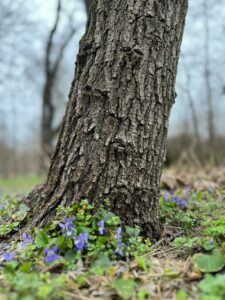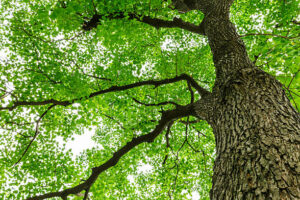Regarding furniture making, the most expensive wood commands top dollar due to its beauty and rarity. Some species exhibit exceptional durability and exquisite grain patterns. Others are coveted for their fragrance or unique properties. Some of the most expensive furniture woods come from trees that have matured for centuries, absorbing natural oils and nutrients that make them strong and resilient. It can also showcase stunning colors and textures.
Rosewood
Rosewood is a luxurious hardwood that has been prized for centuries. It is tough, strong, and dense, and it takes a beautiful polish. It is also resistant to rot and water damage, making it ideal for long-lasting furniture pieces. It is also a great choice for musical instruments, as it has excellent resonance. Its beauty and durability make it one of the most expensive furniture woods.
Brazilian rosewood (Dalbergia nigra) is so rare that it commands an extremely high price. The CITES treaty lists it as endangered, which means that no new rosewood can be harvested without a permit. Other rosewood species, such as east Indian and Madagascar rosewood (Dalbergia latifolia and Dalbergia baronii), are less rare but still command a high price.
Other coveted woods include agarwood and lignum vitae. Both are dense and hard, and they are insect-resistant so that they can hold a smooth, glossy finish. The rare woods are also easy to work with and have a pleasant scent.
Ziricote wood, a Central American hardwood, is another expensive but exotic choice. It is prized for its unique spider-web grain pattern and is used in luxury furniture and decorative items. Ziricote is also a good choice for turning and carving.
Mahogany
Mahogany is a wood that’s been a classic for centuries. It’s also one of the most durable materials for furniture, and it can withstand years of wear and tear. Because of this, it’s an excellent choice for those who want a piece of furniture that will last for generations.
Genuine mahogany is native to South Florida and the Caribbean Islands, where it thrives in warm climates. However, the demand for high-end furniture in Europe and America has led to the over-exploitation of this beautiful tropical timber. The good news is that there are plenty of sustainable ways to produce mahogany wood, and you can still buy it from reputable furniture makers as long as you purchase pieces made with mahogany that come from sustainably harvested tropical forests.
Other highly sought and expensive furniture woods include ebony, which is famous for its deep black color and fine-grained texture. This rare and beautiful wood is also used to craft musical instruments and ornamental items. Another highly valuable and expensive furniture material is snakewood, which has a distinctive look that resembles snakeskin.
These exotic and expensive furniture woods are prized for their durability, beauty fine texture, and elegance. They are often used to create stunning and timeless pieces of furniture that will last for generations. While many people may think that purchasing furniture made from these materials is unsustainable, it’s important to remember that using these materials for furniture production provides jobs and income for local communities and helps to protect the natural environment.
Bubinga
Bubinga is a stunning and durable wood that can be seen in fine furniture, veneers, tool handles, musical instruments, turnery, and other specialty items. It’s often used as a rosewood substitute due to its striking appearance and close resemblance, but even so, it is quite expensive. Bubinga can be found throughout equatorial Africa, and multiple species of the Guibourtia genus yield this wood, so colors and aesthetics can vary dramatically.
Bubinga’s color and grain patterns vary incredibly, and the wood has a beautiful natural sheen. It is often carved and turned into inlays. It’s a strong and heavy wood with a Janka rating of 2,410, so it can dull cutters but is usually well worth the effort for its durability and distinctive natural beauty. It also glues, machine cuts and laser engraves well and finishes with a luxurious sheen.
Despite being an exotic wood, Bubinga is fairly easy to work with. It can be sanded to a smooth finish and responds very well to finishes that sink in and visually push out the figure, such as tung oil or polyurethane. The only downside is that it’s a slow-growing, near-threatened tree, so sourcing the wood takes patience and money. The good news is that it’s more resilient against weathering than some other exotic woods are, and it resists termite and marine borer attacks as well. This makes it a great choice for outdoor furniture.
Purpleheart
Purpleheart is a stunning tropical hardwood that is valued for its natural purple hue. Its scarcity, unique color, and durability make it a popular choice for high-end furniture and decorative applications. Purpleheart comes from the peltogyne tree, which is harvested in Central and South America. This wood is prized for its rich purple hue, which darkens with exposure to sunlight. It is also known for its smooth surface and beautiful grain patterns.
This dark brown exotic wood is difficult to work on, and its gummy nature can damage tools. In addition, it is sensitive to humidity and can suffer from warping or swelling if not properly maintained. It has a Janka hardness rating of 1,860 pound-force, which is significantly higher than common domestic hardwoods like sugar maple and white oak.
While many people love to have their homes filled with heirloom-quality wood furnishings, it is important to consider the environmental impact of purchasing these high-end materials. These expensive woods are often sourced from endangered rainforests, and they can take an immense toll on the ecosystem when harvested and transported. To reduce your ecological footprint, we recommend choosing alternative hardwoods, like cherry or walnut, for indoor furniture and cedar for outdoor furniture.
Wood is one of the most versatile building materials, but it can be not easy to know which woods are best for specific applications. To help you choose the right type of wood for your project, we have put together a list of eight types of wood, the most expensive furniture woods, and what they offer.
Sandalwood
Sandalwood, also known as Chandan or rakta chandan, is a tropical tree in the genus Santalum. It is harvested for its aromatic essential oil, which contains the compound santalol. It is used in perfumes, incense, religious rituals, folk medicine, and beauty products. It has a rich and fragrant aroma that lingers long after it has been applied to the skin.
The fragrance is calming and is believed to increase concentration and promote spiritual practice in religious rituals. It has been used for 4,000 years to alleviate stress, depression, anxiety, and insomnia. It is a common ingredient in Indian incense and is also used for meditation. It is also one of the three incenses integral to Buddhist practice.
It blends well with other woody notes, dark wood, particularly vetiver and pine. It also pairs beautifully with floral scents and helps them stay longer. It enhances the sweetness of jasmine, rose, and ylang-ylang while adding a calming element to tuberose, gardenia, and magnolia scents. It also brings a woody note to musk and ambergris fragrances.
Due to over-harvesting, true sandalwood (Santalum album) is now endangered in the wild. However, the demand for the specialty wood and its essential oils can be met through carefully controlled plantations in India, Vietnam, and New Caledonia. Traders sometimes substitute the highly-prized oil with oils from closely related plants in the genus Santalum, such as agarwood (Santalum burmana), ylang-ylang (Cananga odorata), and bitter quandong (S. acuminatum).
Pink Ivory
Pink Ivory is pink ivory wood a rare exotic wood that’s often used for billiard cues, knife handles, and delicate carvings. It has a gorgeous color palette that ranges from faded rose to watermelon to neon pink. This beautiful hardwood is rot-resistant and very durable. It also takes a high polish well, making it perfect for jewelry and furniture. However, due to its limited growth environment and high demand, this wood is a bit expensive.
Ebony is the rarest wood, a dense, beautiful hardwood that’s prized for its elegance and durability. It is extremely rare, and smuggled or illegally harvested wood can cause its price to skyrocket. It’s also a relatively difficult wood to work with, and it requires special equipment and techniques.
Macassar ebony is another rare wood that’s highly expensive. It’s found in Indonesia and boasts a dark heartwood with wide stripes featuring hints of red ivory yellow and red-brown. It’s also a hardwood that can be difficult to work with, and it is frequently used for high-end furniture and musical instruments.
Snakewood is another rare and expensive wood that’s prized for its beauty and durability. It’s a dense wood that can take a high polish, and it has a unique appearance that resembles snakeskin. It’s also a very difficult wood to find, the most expensive wood, and its high prices are often due to supply issues and demand from foreign markets.






